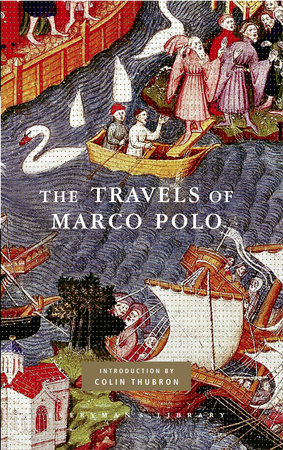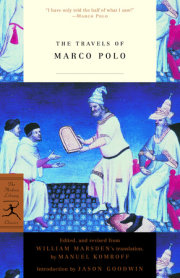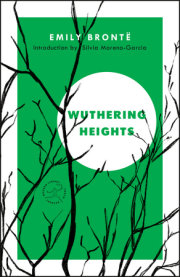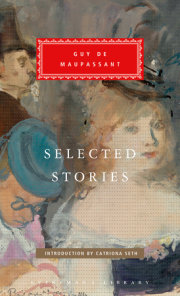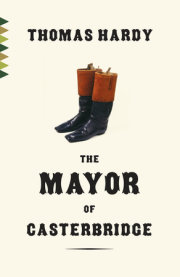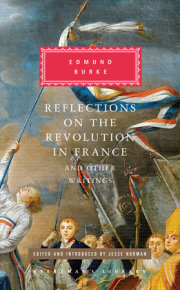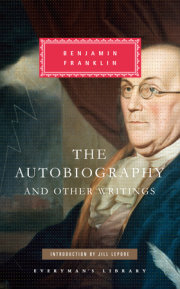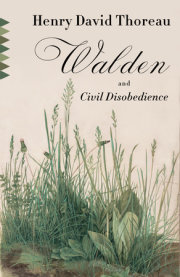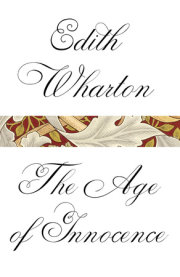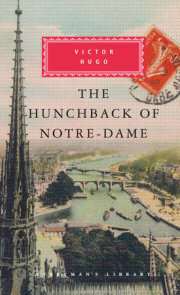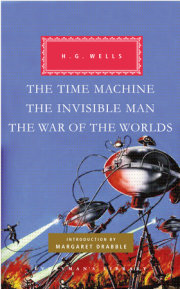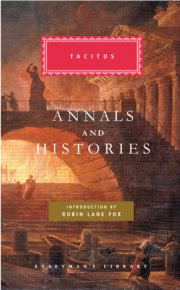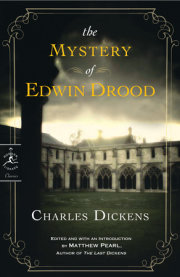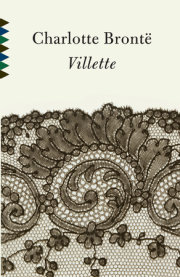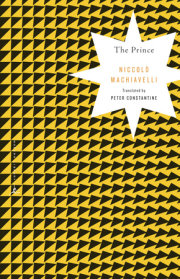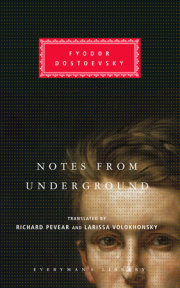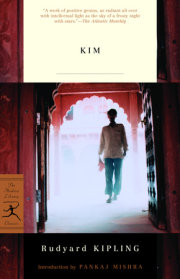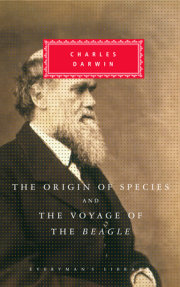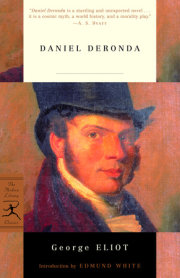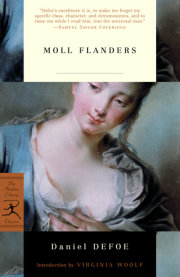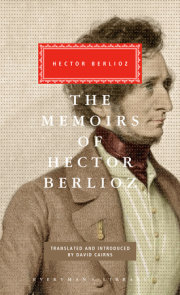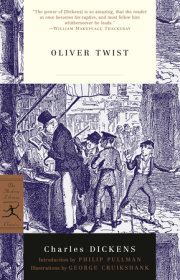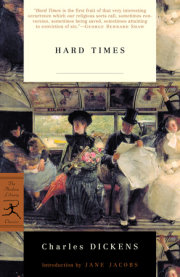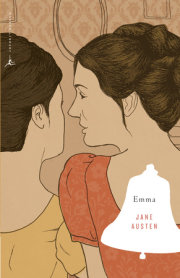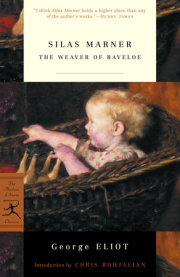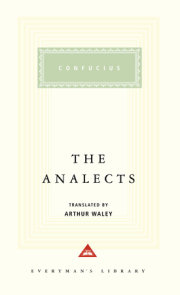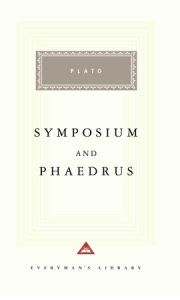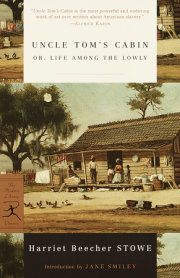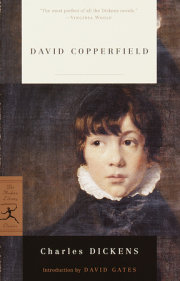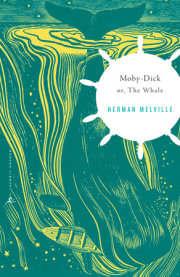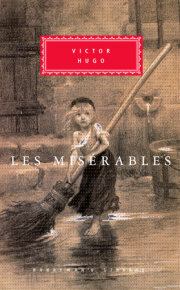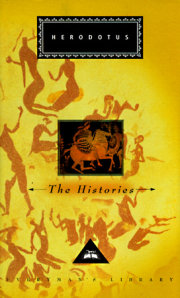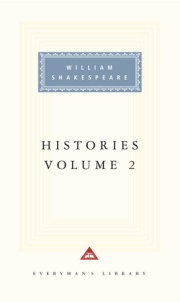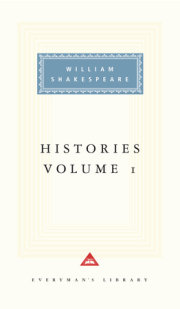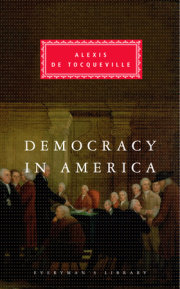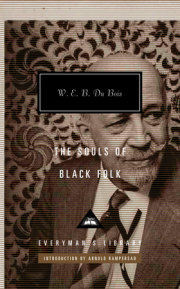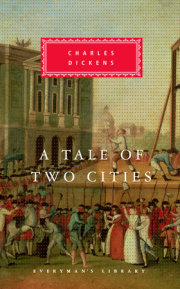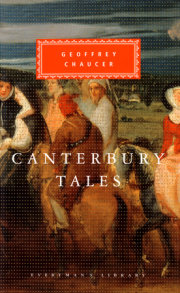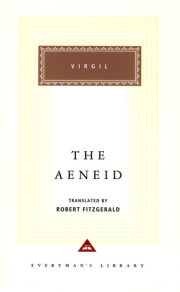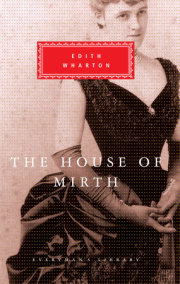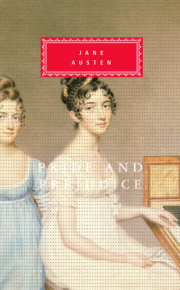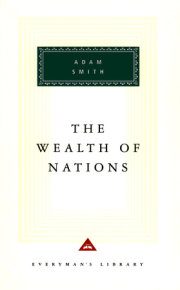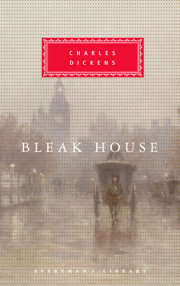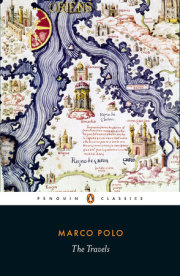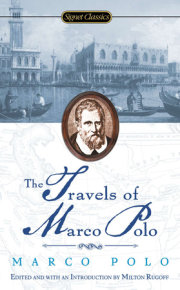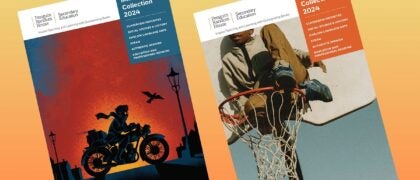I N T R O D U C T I O N
--
Of all the travel sagas ever written, none is more richly astonishing than Marco Polo's Description of the World. It records a land of such fabulous difference that to enter it was like passing through a mirror; and it is this passage - from a still-provincial Europe to an empire of brilliant strangeness - which gives the tale even now a dream-like quality. Even in its day - and for generations afterwards - Polo's book was often regarded merely as the fairy-tale conceit of a vainglorious merchant. Only with time has its portrait of China at the height of the Mongol dynasty - a portrait rich in details which once seemed too outlandish to be believed - been largely corroborated.
Marco Polo was born in 1254 into a family of Venetian merchants, wealthy if not patrician. Even before his celebrated journey his father and uncle had travelled from Constantinople to the Crimea, then continued some 5,000 miles east to the court of Khubilai Khan - the Mongol emperor of a newly conquered China - probably at Cambalu´ , modern Beijing. Marco Polo describes their prodigious journey only briefly, as a prelude to his own. He records how the two men started back for Europe with a request from Khubilai that the pope send them back to him. They were to bring with them a hundred Christian savants and some oil from the lamp above Christ's sepulchre in Jerusalem. By the time Polo's father arrived in Venice in 1269, after sixteen years away, his wife was dead and he had a fifteen-year-old son, whom he had never seen. This was Marco.
Two years later the seventeen-year-old youth, with the two elder Polos, set out on the long journey back to Cambalu´ . Their route is not always easy to follow. Marco's account, dictated almost thirty years later, is full of gaps and muddled chronology. But it seems that after visiting Acre on the coast of Palestine the Polos moved in a wide loop from eastern Turkey down through modern Iran to Hormuz on the Persian Gulf. From there they crossed Persia north-east to Balkh, in today's Afghanistan, and over the Pamir mountains through Kashgar to the Taklamakan desert of north-west China. Skirting this dangerous wasteland southward, they then circled north of the Yellow River to the khan's summer palace of Xandu´ , and at last to Cambalu´ . The journey had taken three and a half years.
There follows the heart of Polo's narrative: a portrait of Khubilai Khan's world that is both reverential and intimate. In turn he evokes the great palaces of marble with walls sheathed in gold and silver, the curious court etiquette and sumptuous ceremonial banquets, the imperial pavilions, hunting and falconry. He describes the empire's fiscal policy and the novel use of paper money, the khan's easygoing religious faith, his wardrobe, his superb postal system, even the privacies of his sex life and harem.
Then, travelling south, Polo writes of the ancient Chinese regions recently subdued by the Mongols, a world epitomized by the old Sung dynasty capital of Quinsai, modern Hangzhou. Even in its captive state, this city struck him as the gentlest and most refined in the world, and its now dead ruler as a paragon of benevolence. He goes on to give valuable accounts of the Mongol conquest and of the failed invasion of Japan, then, in an attempt to fulfil his professed purpose of describing the entire world, broadens his canvas into sketches of the lands he touched on during his return sea journey - and of others beyond those: Indonesia, Sri Lanka, India and beyond the Arabian Sea to Africa, even Russia.
Polo was in China for between sixteen and seventeen years, and it is from this that the value of his narrative springs. He claims to have been an intimate of the great khan himself, and to have served as an imperial envoy, even as governor of a city.'Marco was held in high estimation and respect by all belonging to the court,' he says of himself immodestly. 'He learnt in a short time and adopted the manners of the Tartars, and acquired a proficiency in four different languages . . .' And again (in another manuscript): 'This noble youth seemed to have divine rather than human understanding.'
The fact that nobody of Polo's name, or similar, is recorded in the imperial service by contemporary Chinese chronicles does not discount his claim. His duties were perhaps less official than he implies. Certainly it was a policy of Khubilai to employ able foreigners. Turkic and Persian Moslems especially, Indians and Nepalese, all served as a buffer between the Mongol overlords and their teeming Chinese subjects. The khan's personal bodyguard were foreigners from the Caucasus and beyond. His own mother, the astute and powerful Sorghaghtani Beki, was a Nestorian Christian. Polo himself mentions mercantile quarters in Cambalu´ for Germans, Lombards and French, and his family's mission to the Mongol court had been preceded by others more formal.
In the mid-thirteenth century, half Asia seemed poised precariously between Islam and Christianity. Popes and Christian kings, fearful of the Moslem pressure on Palestine, grasped for salvation in rumours of a sympathetic Mongol power to the east. In 1245 Pope Innocent IV had sent the Franciscan friar Giovanni da Pian del Carpini to the court of the great khan at Khara Khorum (where he witnessed the enthronement of one of Khubilai's predecessors), and in 1253 Louis IX had despatched another friar, William of Rubruck. But both men returned with the same disheartening message: Let your kings come here and pay us tribute.
As for Marco Polo's character, the man who percolates through his often terse and impersonal sentences is at once sharply observant and rather naive. His intelligence, it seems, was a merchant's: astute in practical things, energetic and resourceful. His obsession with the pomp and refinements of court, with feasts and ceremonial, costume and luxury, is that both of a salesman and a dazzled courtier. But typical of his mother city, he was tolerant of other faiths and practices. His routine dismissal of idolatry does nothing to dim his admiration for Mongol rule and Chinese life ('Their style of conversation is courteous . . . To their parents they show the utmost respect.') Like a harbinger of the new age, he is endlessly intrigued by
the novel and the different.
But above all, there is the matter of Polo's integrity. Ever since it was written, his book has caused unease. Alongside verifiable fact and rigorous observation, he tosses in hearsay and credulous imaginings. A few sinologists have even asked: did he go to China at all? Could he have gathered his intelligence from elsewhere?
In his Description Polo tells at least one outrageous lie. At the Mongol siege of the 'large and splendid' Sung city of Xiangyang, he claims to have been instrumental in its capture. Along with his father, uncle and two foreign engineers, he says, he designed a mangonel, a giant catapult, which lobbed stones into the city so that its defenders were panicked into surrender. Yet this unlikely story is invalidated by chronology: the city's capitulation took place in January 1273, some two years before Marco Polo even reached China.
Here, it seems, Polo has fallen victim to sheer self-aggrandisement. What, one wonders, did his father and uncle think, who survived to hear this story? Perhaps they were complicit in it. Perhaps he even offered it to them as a sop: for after his arrival in China he barely mentions them again, as if their presence would detract from his own stature. Marco claimed, moreover, to have been for three years governor of the important trading city of Yangzhou. Yet once again there is no mention of him(or any Polo) in the detailed Chinese annals of the time.
Other matters have stirred doubt among critics, such as Polo's failure to record the Chinese practice of female footbinding, printing or the presence of the Great Wall. But Polo's book is the flotsam of memory, with all its gaps and elisions. There were things that may even have become so familiar to him that he lost sight of their strangeness. He does, in fact, obliquely allude to foot-binding; and the Great Wall in his day was not the mountain-cresting spectacle built by the Ming dynasty three centuries later, but a cruder assemblage of staked palisades in earth or clay.
More remarkable is the information Polo gives about phenomena which only became common knowledge years - or centuries - after him. His account of the disastrous Mongol expedition against Japan, however imprecise, was almost the first intimation that another country lay beyond the vast landmass of China. His record of the widespread use of coal too, and of paper money (first widely circulated under the Sung dynasty) fell strangely on European ears. And alongside rumours of dog-faced cannibals or of the mythic Prester John, other instances of hearsay ring belatedly true. Polo's descriptions of the custom of couvade, for instance - of men appropriating the power of women in childbirth, by imitation - was received with blank disbelief until confirmed by modern anthropology.
However incoherently Polo's outbound journey was remembered and written, the modern traveller on the Silk Road stumbles with sudden recognition on phenomena he recorded. His account of the 'Old Man of the Mountain', founder of the fearsome sect of Assassins, is a garbled memory of a murderous Ismaili sect liquidated by the Mongols. But even today the traveller may ascend to their ruined bastion of Alamut in north-west Iran, and glimpse the cliff-castle of Maimundiz where they met their end.
In the Pamir mountains the monstrously-horned rams that Polo described, now named 'Marco Polo sheep', have become an endangered species; the air on the plateaux is indeed so starved of oxygen that 'no birds are to be seen near their summits'; and fire, as he records with amazement, burns only fitfully.
His journey along the southern rim of the Taklamakan desert may be followed to the salt wastes of Lop and the shrines of Dunhuang, crowded, as in his day, with 'idols'; and the sand dunes are still eerily noisy and shifting - although their sounds are now attributed to sharp temperature changes rather than the bustling of demons. The rare traveller to Khotan may still find the jade pebbles (Polo thought them chalcedony and jasper) carried on its rivers, or stumble with surprise on asbestos('salamander') mines in the Altun mountains: 'but of the salamander under the form of a serpent,' Polo writes in one version, 'supposed to exist in fire, I could never discover any traces in the eastern regions.' Northward the town of Hami (Polo's Chamul) remains rich in fruit, especially melons - but its women no longer consort freely with travellers; and eastward into modern Gansu province, in the obscure town of Zhangye, you may stumble with astonishment on one of the same giant reclining Buddhas as Polo knew.
But the most solid corroboration of Polo's biography lies in his departure. In 1291, after nearly seventeen years in the service of the great khan, he says, he with his father and uncle joined a naval mission escorting the Mongol princess Cogatin westward. She was the bride promised to the Mongol ruler of Persia, and this apparently secret mission was only confirmed years later, from Chinese and Persian sources.
The marvels that Polo recorded, of course, have gilded his book with an aura of fantasy. Wherever he did not personally observe his subject, he grew credulous. For beyond the horizons of his contemporary world the earth blurred into infinite possibility. More than a generation after Polo's day, the Travels of Sir John Mandeville, a ragbag of wonders and borrowings - and the most widely read book of its kind - was only falteringly disbelieved. So too, as Polo reaches beyond his immediate knowledge, his stories grow shaky with the fears and rumours of his time: with Tibetan astrologers conjuring tempests and thunderbolts, with the realm of Gog and Magog and the ruch bird which carries off elephants then drops them to smash on the ground before eating them. And black magicians effected the most famous miracle of all: the golden cups at the feast of the great khan, which levitated back and forth at his table before the eyes of the whole court.
But in general Marco Polo was hard-headed. His veneration for the emperor may have been steeped in his bedazzlement by power and riches, and the Venetian was vulnerable to Mongol myths about themselves, praising even Chinggis Khan as a paragon of kindly justice. But the esteem in which he held the great khan Khubilai was not misplaced. The ruler, by Polo's time, had forged the largest and most populous empire there had ever been, and was attempting to unify it with a shrewd and far-sighted tolerance.
The assessment of Marco Polo's character and integrity is complicated by the production of his Description of the World, which soon became known as The Travels of Marco Polo. For the book was not written by Polo, but narrated by him to a writer of Arthurian romances named Rustichello of Pisa while they languished together in a Genoese gaol.
Copyright © 2001 by Marco Polo. All rights reserved. No part of this excerpt may be reproduced or reprinted without permission in writing from the publisher.

